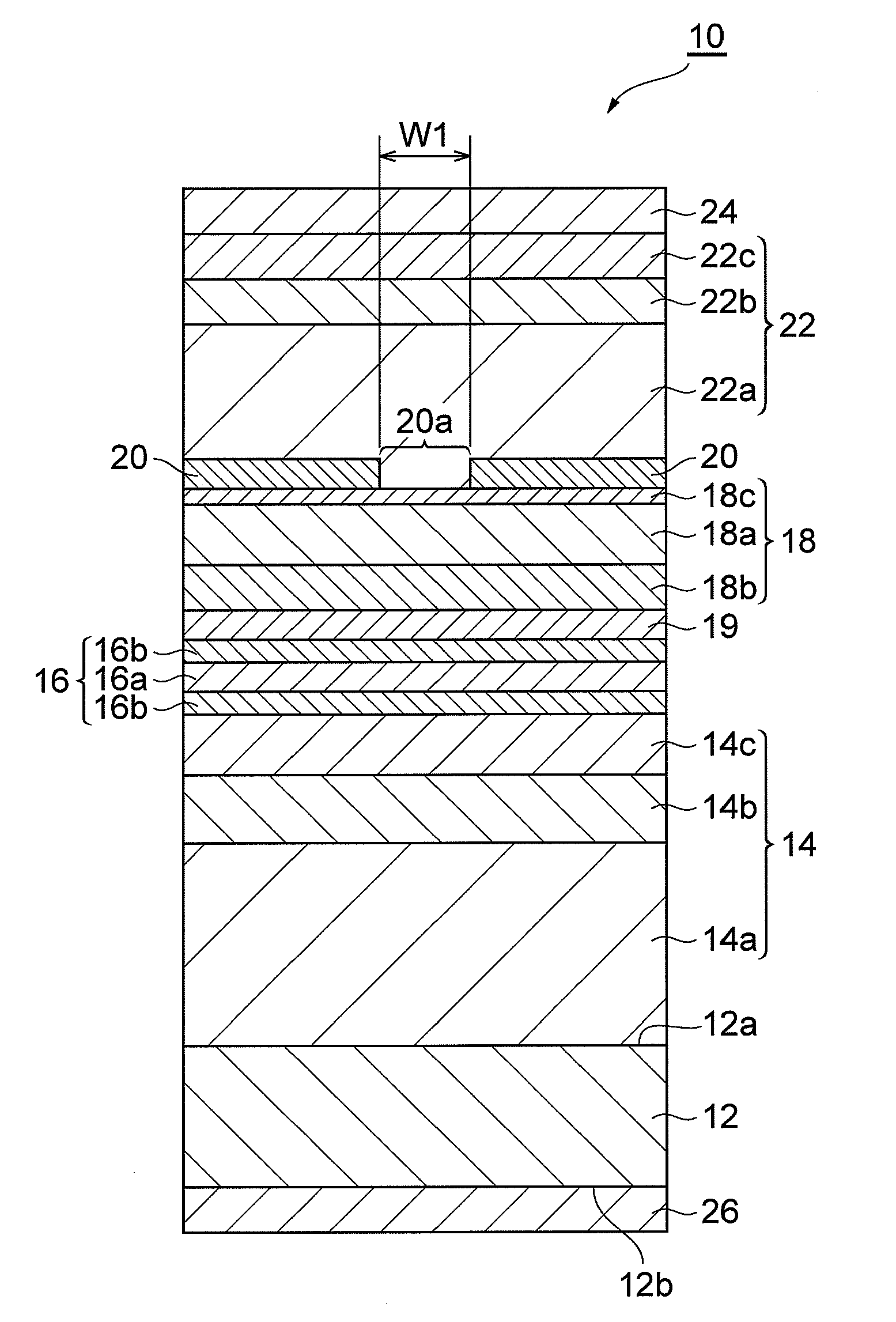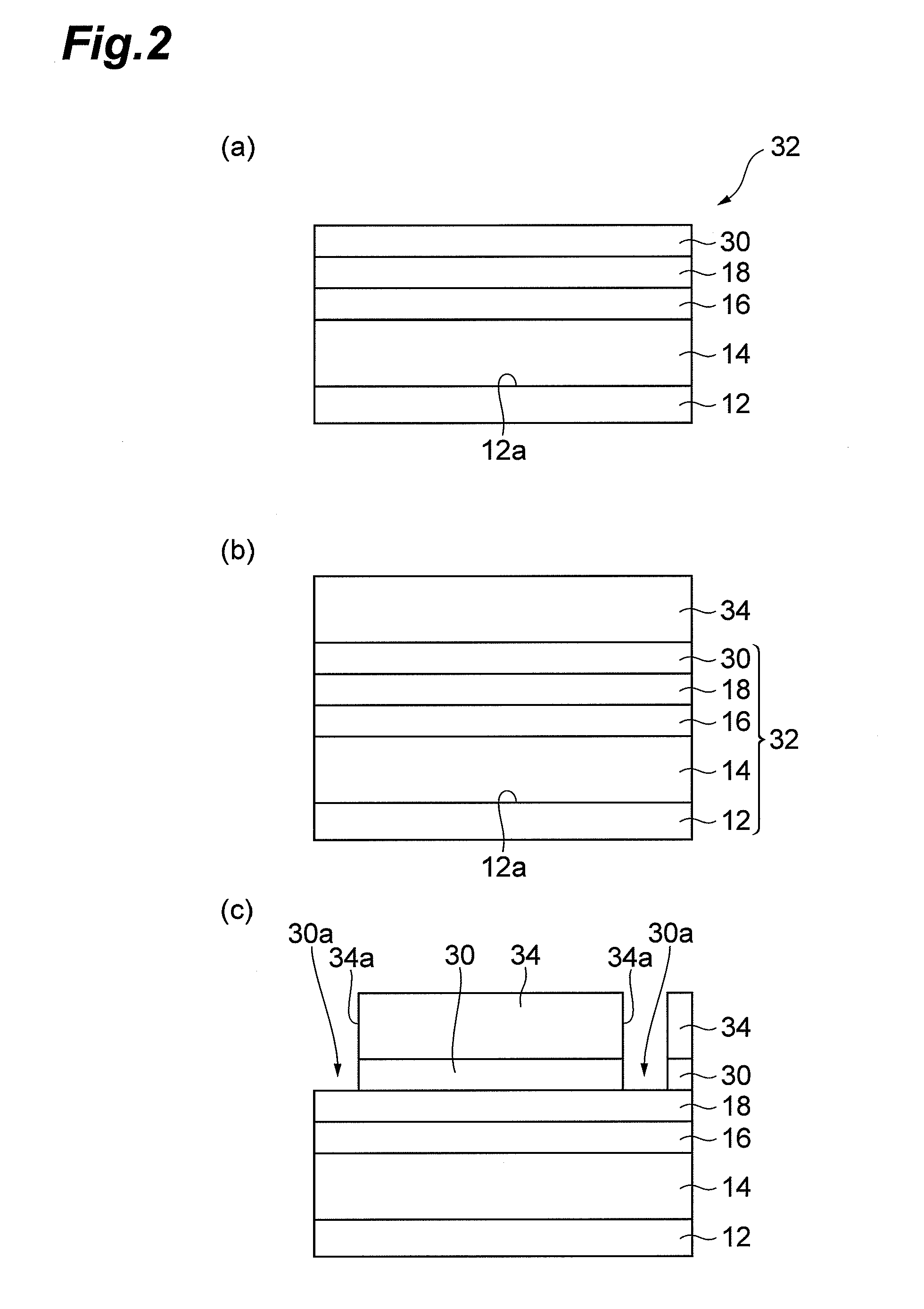Group iii nitride semiconductor laser device
a semiconductor laser and nitride technology, applied in semiconductor lasers, laser details, electrical devices, etc., can solve the problems of unsatisfactory crystal quality of the layer to be grown (p-type cladding layer), inability to apply high temperature cleaning, current loss thereat, etc., to increase the threshold current density increase the drive voltage of the semiconductor laser device.
- Summary
- Abstract
- Description
- Claims
- Application Information
AI Technical Summary
Benefits of technology
Problems solved by technology
Method used
Image
Examples
Embodiment Construction
[0026]The teachings of the present invention can be readily apparent from the following detailed descriptions with reference to the accompanying drawings that illustrate typical embodiments. A group-III nitride semiconductor laser device according to an embodiment of the present invention will now be described with reference to the accompanying drawings. If possible, the same reference numerals are assigned to the same components.
[0027]FIG. 1 is a view illustrating the structure of a semiconductor laser device 10 according to an embodiment of the present invention, and the cross-section or end face thereof is taken along the line vertical to the optical cavity direction. The semiconductor laser device 10 can include a group-III nitride semiconductor laser device which can emit green laser light having an emission wavelength in the range of 500 nm to 540 nm. The semiconductor laser device 10 includes a semiconductor substrate 12 as a support, an n-type semiconductor region 14, an act...
PUM
 Login to View More
Login to View More Abstract
Description
Claims
Application Information
 Login to View More
Login to View More - R&D
- Intellectual Property
- Life Sciences
- Materials
- Tech Scout
- Unparalleled Data Quality
- Higher Quality Content
- 60% Fewer Hallucinations
Browse by: Latest US Patents, China's latest patents, Technical Efficacy Thesaurus, Application Domain, Technology Topic, Popular Technical Reports.
© 2025 PatSnap. All rights reserved.Legal|Privacy policy|Modern Slavery Act Transparency Statement|Sitemap|About US| Contact US: help@patsnap.com



